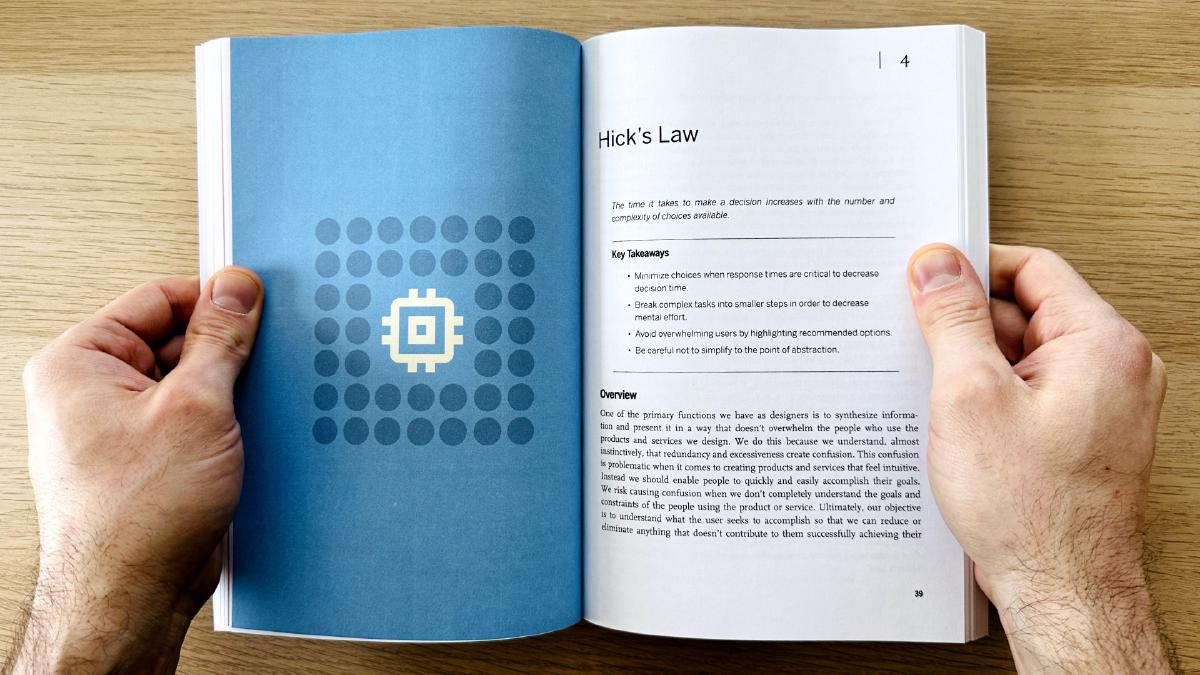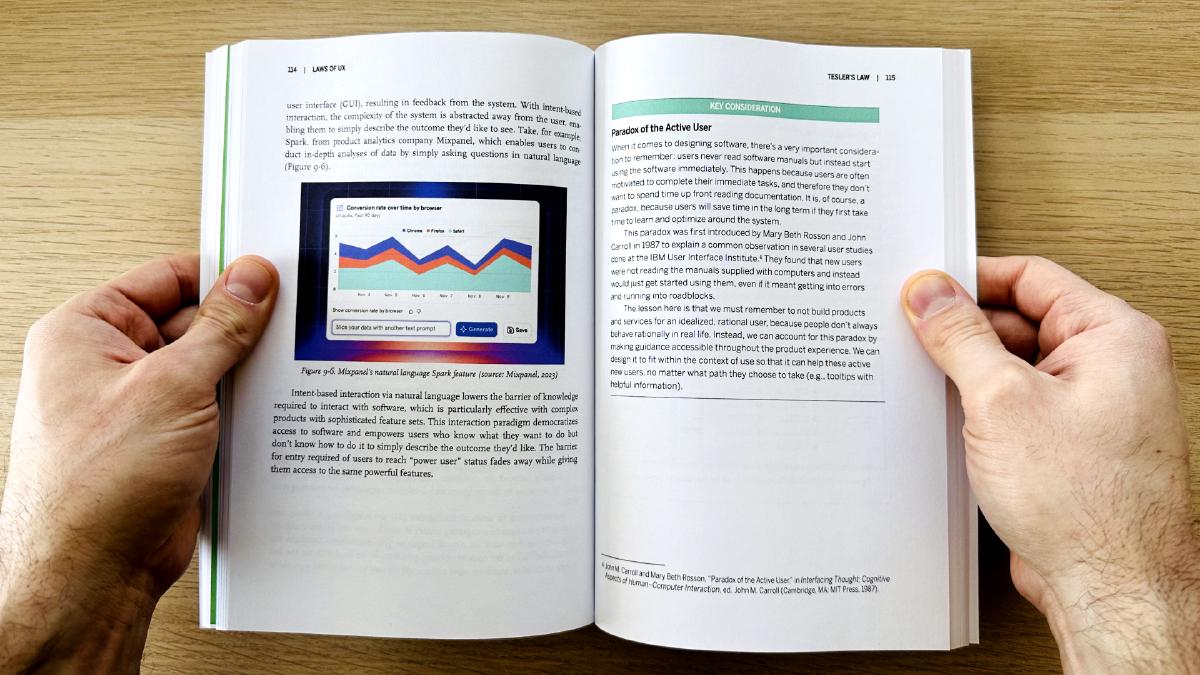Laws of UX Book, 2nd Edition

A new edition that includes an even deeper connection to the underlying psychological concepts that govern the principles explored in the book, along with accompanying UX methods and techniques. Examples have been updated to ensure the deconstructed apps and experiences remain familiar and relevant.
The 2nd edition of Laws of UX is now the #1 new release in user experience & website usability on Amazon.
An understanding of psychology-specifically the psychology behind how users behave and interact with digital interfaces-is perhaps the single most valuable non-design skill a designer can have. The most elegant design can fail if it forces users to conform to the design instead of working within the “blueprint” of how humans perceive and process the world around them. This practical guide explains how you can apply key principles of psychology to build products and experiences that are more human-centered and intuitive. It deconstructs familiar apps and experiences to provide clear examples of how UX designers can build interfaces that adapt to how users perceive and process digital interfaces.
What’s new
The craft of design has a dynamic nature that keeps evolving along with technology. With every new technological advancement, new constraints and possibilities are introduced. Since the first edition of this book, LLMs (Large Language Models) have undergone significant advancements, AI-powered image generation tools have emerged, spatial computing has entered the mainstream, and smartphones have become even more powerful. However, the principles and concepts covered in this book remain timeless, and they provide a solid foundation for every designer, regardless of their level of expertise. To enhance the reader’s experience, the second edition includes additional information linking these principles and concepts to psychology concepts, techniques, and key considerations. This edition also features updated examples throughout, making it a practical guide for designers who want to stay up-to-date with the latest trends and best practices in the field of design.
- Paradox of Choice
- Complexity Bias
- Flow
- The Human Factor
- Accessibility
- Paradox of the Active User
- Personalization
- Contextual Inquiry
- User Interviews
- Eye-tracking
What you’ll learn
- How aesthetically pleasing design creates positive responses
- The principles of psychology most useful for designers
- How these psychology principles relate to UX heuristics
- Predictive models including Fitts’s law, Jakob’s law, and Hick’s law
- Ethical implications of using psychology in design
- A practical framework for applying principles of psychology in your design process
Gallery






2nd Edition Reviews
The Laws of UX serves as an excellent resource for both newcomers and professionals, encouraging them to delve into the deeper why behind design choices instead of merely imitating existing patterns.
This is the book I didn’t know I needed at the start of my career and the one I insist on for my students and staff.
Jon has broken down common psychology principles in a way that makes it easier to apply in everyday designs across all industries.

Review the book online with this 30-day free membership to the O’Reilly Learning Platform.
Where you can find it
Amazon
Paperback, Kindle
Apple Books
EPUB
Target
Paperback
O’Reilly Learning
eBook
Bookshop
Paperback
Alibris
Paperback
AbeBooks
Paperback
Translations
Portuguese
Novatec
Bulgarian
Asenevtsi Publishing
Korean
Onlybook.co
German
dpunkt
Interviews

A discussion with Andrés Zapata, D.Sc. that dives into the details around the second edition of my book.

